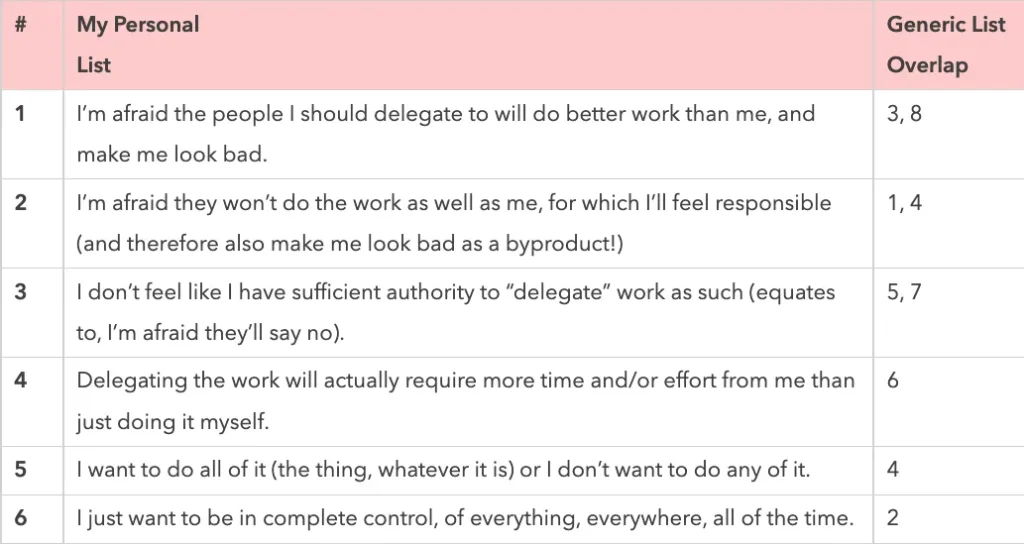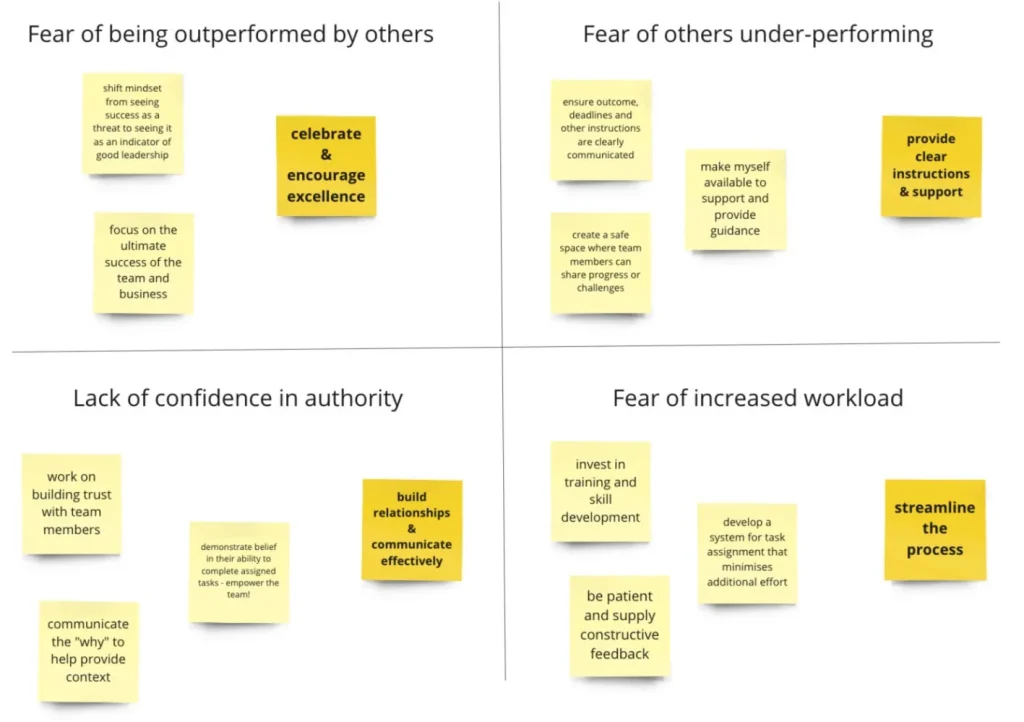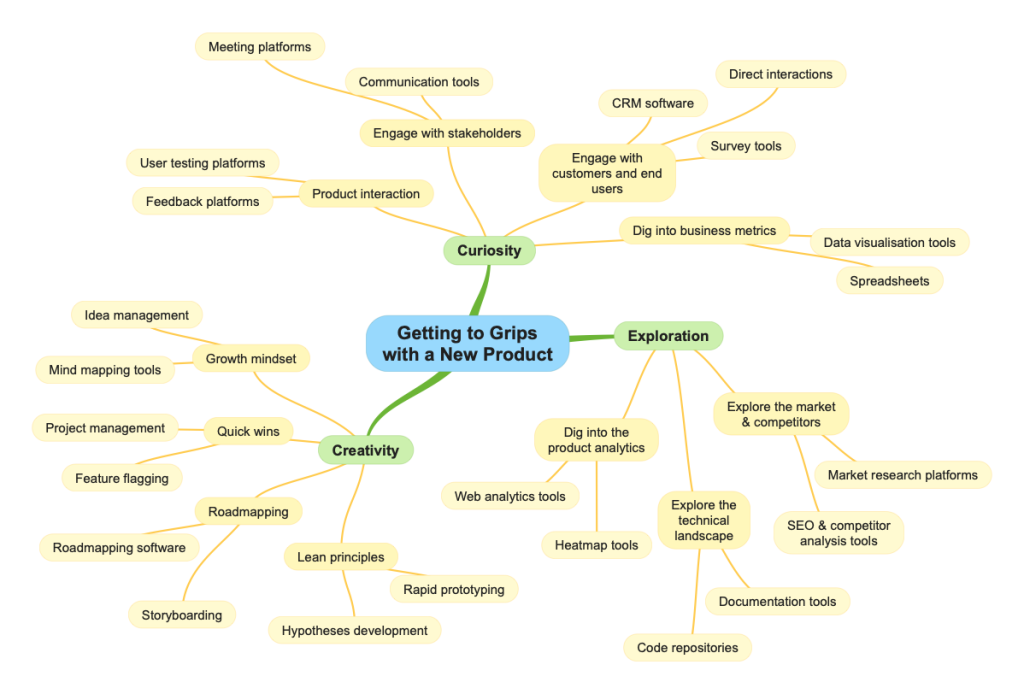Growing Your Local Business Without Technology Overwhelm
If you’re like most UK small business owners I work with, you didn’t start your company because you were passionate about lead tracking systems or customer databases. You started because you’re brilliant at what you do – whether that’s manufacturing custom products, providing specialist services, or solving problems for your local community.
Yet somehow, between managing staff, keeping up with HMRC requirements, and actually delivering your products or services, you’re also expected to become an expert in marketing technology and customer relationship management.
It’s no wonder so many brilliant local businesses struggle to grow consistently.
During my interactions with small and medium-sized businesses across the UK, I’ve seen firsthand how the right approach to finding and managing customers can transform a business – without requiring a marketing degree or an IT department. This guide cuts through the noise to give you practical, straightforward advice that works for businesses like yours.
Finding Customers Who Actually Want What You Offer
“We want to grow much faster than what we are currently doing,” a local manufacturing business owner told me recently. Like many UK SMEs, they’ve been open for a few years, weathered some challenging conditions, and now want to accelerate their growth without wasting limited resources.
The first step is identifying where your ideal customers are actually looking for solutions like yours.
Understanding Your Local Market Reality
The UK business landscape has its own unique characteristics. While the digital marketing gurus might be pushing the latest social media platform or American-centric tactics, your potential customers might be finding local suppliers through completely different channels.
For many local UK businesses, your best leads might come from:
- Local business networks and Chambers of Commerce
- Industry-specific directories that UK buyers trust
- Relationships with complementary local businesses
- Word-of-mouth referrals from existing customers
- Local search results when people look for services “near me”
Before investing in any lead generation channel, ask yourself: “Is this where my ideal customer would naturally look for a business like mine?”
Consider a manufacturer of custom products, like Raza’s company. Their ideal customers might not be scrolling Instagram looking for suppliers, but they very likely consult Google Business profiles, check reviews, or ask trusted contacts for recommendations.
Testing What Works Without Burning Cash
The reality for most UK small businesses is that marketing budgets are tight, and every pound needs to deliver results. Rather than spreading yourself too thin, focus on proving what works in small, controlled experiments.
Choose 2-3 potential channels that make sense for your type of business. For example:
- A joinery business might focus on Google Business Profile optimisation, building relationships with local architects, and asking for customer reviews
- An IT support company might prioritise LinkedIn networking, local business networking events, and strategic partnerships with web developers
- A specialist manufacturer might invest in industry trade shows, direct outreach to procurement managers, and case studies featuring successful projects
For each channel, create a simple 4-week test with minimal investment. Set clear targets—perhaps 5 qualified enquiries or 2 new customers—and track your results diligently.
This evidence-based approach prevents the common scenario I see with many local businesses: investing thousands in a new website or marketing campaign without any clear idea of whether it’s actually likely to generate a return.
Contact Us for a Free Consultation
Not sure where to start? Let’s chat! Schedule a free 15-minute consultation and let’s find the best path forward.
Avoiding the Costly Mistakes Most Local Businesses Make
Working with Black Country SMEs has shown me the same patterns repeatedly. Understanding these common pitfalls can save you significant time, money, and frustration.
The “Too Broad” Trap
Many local businesses try to appeal to everyone out of fear of missing opportunities. A manufacturer might say they make “custom products for any requirement” or a consultant might claim to “help businesses of all sizes grow.”
The problem? When you speak to everyone, you resonate with no one.
The businesses I’ve seen grow most consistently have crystal clear positioning. They might say: “We create bespoke joinery solutions for high-end residential renovations in the West Midlands” or “We provide IT support specifically for accountancy firms with 5-50 employees.”
This specificity doesn’t limit your business—it makes your marketing infinitely more effective and helps qualified leads self-identify.
The Feast-or-Famine Cycle
This scenario plays out constantly across UK small businesses: When work is slow, owners frantically network, send emails, and chase leads. Once those efforts pay off and they get busy with delivery, all marketing efforts stop… until the work dries up and the cycle repeats.
This creates a perpetual roller coaster of feast and famine that makes planning impossible and keeps you constantly stressed about cash flow.
Breaking this cycle requires creating sustainable marketing systems that continue working even when you’re busy delivering. This might mean:
- Setting aside non-negotiable time blocks for business development, even during busy periods
- Delegating certain lead generation activities to team members or trusted partners
- Creating automated follow-up systems that maintain contact with prospects
- Developing strategic partnerships that provide a steady stream of referrals
The businesses that grow consistently are those that treat marketing as an essential ongoing function, not an emergency measure when work is scarce.
The Follow-Up Failure
“We met at that networking event last month—have you had a chance to think about what we discussed?”
If that sounds familiar, you’re not alone. In my experience, West Midlands business owners are often excellent at making initial connections but struggle with systematic follow-up. Many potential deals are lost not because the prospect chose a competitor, but because consistent follow-up simply didn’t happen.
The most successful local businesses I work with create simple but reliable follow-up processes. This doesn’t require fancy automation—it can be as straightforward as blocking 30 minutes every Friday to check in with recent prospects or setting calendar reminders after initial meetings.
Qualifying Leads: Working Smarter, Not Harder
As a local business owner with limited time and resources, you simply can’t afford to chase every lead that comes your way. Effective qualification helps you invest your energy where it’s most likely to pay off.
Spotting the Signs of a Good-Fit Customer
During my time of working with local SMEs, I’ve identified several indicators that a prospect is worth pursuing:
- They value quality and service over rock-bottom prices. If their first and only question is about getting the cheapest quote, they probably aren’t ideal for most specialist local businesses.
- They have realistic expectations about timelines. Clients who need everything “yesterday” often create chaos for your operations and disappoint your other customers.
- They communicate clearly and respectfully. The way prospects treat you during initial interactions speaks volumes about how they’ll behave as customers.
- They have made similar purchases before. First-time buyers often require significantly more education and have less realistic expectations.
- They’re financially stable. For B2B sales, Companies House information can provide valuable insights into a prospect’s financial health.
Creating a Simple Qualification Process
You don’t need elaborate scoring systems—just a consistent approach to evaluating prospects. Consider creating a simple checklist of 5-7 questions that help determine fit:
- What’s driving their interest right now?
- What solutions have they tried previously?
- What’s their budget range for this project?
- What’s their expected timeline?
- Who will be involved in making the decision?
- How will they measure success?
After your initial conversation, take two minutes to rate the opportunity from 1-5 on fit, budget, and timeline. This creates a simple way to prioritize your follow-up efforts across multiple prospects.
Remember, disqualifying poor-fit prospects isn’t a failure—it’s good business sense that frees your resources for opportunities with better potential.
Building a Follow-Up System That Works for UK SMEs
“I’ll send over that information and check back next week” – how many times have you said this with the best intentions, only to get sidetracked by urgent client issues or pressing operational matters?
The reality for most UK small business owners is that consistent follow-up falls victim to the daily firefighting that comes with running a company. Yet studies consistently show that most sales happen after 5+ points of contact, while most businesses give up after just 2-3.
Follow-up is often the highest-return activity available to small business owners
A Practical Follow-Up Approach for Busy Business Owners
You need a system that doesn’t collapse when you get busy—because you will get busy. Here’s a straightforward approach that works for the local businesses I support:
Keep a single central record. Whether it’s a simple spreadsheet or a basic CRM, have ONE place where all prospect information lives. Include columns for:
- Contact details
- Lead source
- Last contact date
- Next follow-up date and action
- Notes from previous conversations
- Current status (e.g., new enquiry, proposal sent, negotiating)
Create templates for common situations. Save time by preparing standard emails for typical scenarios:
- After initial enquiry
- Following up on sent proposals
- Checking in after periods of silence
- Seasonal check-ins with past clients
Set a realistic follow-up sequence. For most small-ish B2B businesses, a sequence like this can work well:
- Same day: Thank you/summary after initial conversation
- 2-3 days later: Additional information or helpful resource
- 7-10 days later: Check-in with specific question
- 21 days later: Final “are you still interested?” message
- 60-90 days later: Reconnection attempt if no response
Block dedicated follow-up time. Schedule non-negotiable time in your calendar—perhaps Friday mornings—specifically for follow-up activities. Treat this time as seriously as you would a client meeting.
If you’re thinking “I haven’t got time for all that,” consider this: improving your conversion rate from enquiry to sale by just 10% could transform your business with zero additional marketing spend. Follow-up is often the highest-return activity available to small business owners
Do UK Small Businesses Really Need a CRM?
“You need a proper CRM system” is advice thrown at virtually every growing business. But the reality is more nuanced, especially for UK SMEs with limited technical resources and tight budgets.
Signs Your Business Has Outgrown Spreadsheets
You probably need to consider a dedicated CRM system if:
You’re regularly losing track of follow-ups. If you’ve had more than one client say, “I never heard back from you,” that’s a warning sign.
Multiple people need access to customer information. Once you have team members involved in sales or customer service, centralised information becomes crucial.
Your business relies on long-term client relationships. If repeat business and ongoing service are important, tracking interaction history becomes valuable.
You need to forecast cashflow accurately. If you’re making decisions about hiring or investment based on your sales pipeline, you need reliable visibility.
When You Can Probably Stick with Simpler Tools
Conversely, you might not need a dedicated CRM yet if:
Your business deals with a small number of projects at any time. If you’re handling 5-10 active customers and prospects, a well-organised spreadsheet might suffice.
You have a very straightforward sales process. If your typical sale involves just one or two conversations before decision, complex pipeline tracking may be overkill.
You’re a solo operator or micro-business. Sometimes the overhead of maintaining a CRM outweighs the benefits for very small operations.
The key is being honest with yourself about your actual needs and behaviour patterns. An unused CRM system is worse than no system at all.
What a Basic CRM Looks Like for a Local UK Business
If you do decide you need a CRM, start simple. For most local businesses, a functional system helps you visualise your sales process—from initial enquiry through to completed project.
A typical setup might include these stages:
- New Enquiry: Someone who has reached out or expressed interest
- Needs Assessment: Understanding their requirements in detail
- Proposal/Quote: Formal recommendation and pricing sent
- Negotiation: Addressing questions and finalising details
- Won/Lost: Final outcome (with reason noted)
- Delivery: Active client work
- Follow-Up: Opportunities for reviews, referrals, or additional work
For each prospect, you’ll track their current stage, relevant contact details, and notes about your interactions. You’ll also want to record next steps and follow-up dates.
This approach creates valuable visibility. At a glance, you can see exactly where every prospect stands and what needs attention next—whether you’re using a dedicated CRM or a well-structured spreadsheet.
Finding the Right Tools for UK Small Businesses
The technology landscape can be overwhelming, especially with most solutions designed for larger enterprises or American markets. Here’s a practical guide to finding tools that work for UK small businesses at different stages.
For Micro-Businesses Just Getting Started
If you’re building your first formal lead generation and follow-up system, focus on simplicity:
For lead capture: Your existing website with a simple contact form, or even just your professional email signature with a clear call to action.
For contact management: A structured Excel or Google Sheets template with basic pipeline stages.
For follow-up: Your regular email account with calendar reminders for follow-ups.
UK-specific considerations: Ensure any tools you use are GDPR compliant, with clear processes for consent and data management.
Total cost: £0-20/month
This approach requires more manual effort but gives you the chance to develop your process before investing in more sophisticated tools.
For Established Small Businesses
As your lead volume increases and your process solidifies, consider:
For lead capture: Simple landing pages with tools like Unbounce or website forms that integrate with other systems.
For contact management: UK-friendly CRMs like Capsule CRM or Zoho CRM that provide visual pipeline management without excessive complexity.
For follow-up: Email platforms like Mailchimp or EmailOctopus that allow for some basic automation while remaining accessible to non-technical users.
Total cost: £50-150/month
Look for tools with UK-based support and clear GDPR compliance features.
For Growing Medium-Sized Businesses
Once you have a proven process and dedicated sales or marketing staff:
All-in-one platforms: Systems like HubSpot, Zoho One, or Act! that combine CRM, marketing, and customer service functions.
Integration tools: Zapier connections to allow your specialist tools to share data seamlessly.
Total cost: £200-500/month
At this stage, consider UK-based implementation partners who understand local business needs rather than trying to configure complex systems yourself.
Making Your Systems Work Together
Regardless of which tools you choose, aim for a smooth flow of information:
- Lead details captured on your website should appear in your CRM or spreadsheet without manual copying
- Follow-up tasks should be clearly assigned and visible
- Communication history should be accessible to anyone who interacts with the prospect
- Reporting should give you clear visibility into what’s working and what isn’t
If you find yourself constantly copying information between systems or updating multiple places with the same details, that’s a sign your tool stack needs simplification.
Taking Action: Your Next Steps
Reading about systems is one thing; implementing them is another. Here’s a practical roadmap specifically for UK small business owners:
Week 1: Honest Assessment
Take a step back and evaluate how you’re currently finding and managing leads. Where are the bottlenecks? What’s falling through the cracks? When was the last time you followed up with that promising lead from the Chamber of Commerce event?
Document your findings, even if it’s just bullet points in a note. This baseline understanding is crucial for meaningful improvement.
Week 2: Define Your Ideal Customer and Process
Based on your experience and what you’ve learned in this guide, get clear on:
- Who are your most profitable, enjoyable clients? What do they have in common?
- What makes someone a good-fit customer for your business?
- What would an ideal sales process look like, from first contact to project completion?
Keep it simple and focused on what matters most for your specific business.
Week 3: Set Up Your Basic Tracking System
Choose the simplest tool that will meet your current needs—for many local businesses, that’s still a well-structured spreadsheet. Set up your pipeline stages and add your existing prospects.
Create templates for your most common follow-up scenarios and block time in your calendar specifically for lead management activities.
Week 4: Focus Your Lead Generation Efforts
Based on your understanding of your ideal customers, select 1-2 channels to focus on initially. For most local UK businesses, this might include:
- Optimising your Google Business Profile
- Joining a targeted local networking group
- Activating your existing customer base for referrals
- Improving your local SEO for “near me” searches
Create a simple 30-day experiment for each, with clear success metrics.
Week 5 and Beyond: Review, Refine, and Grow
Schedule a monthly review of your lead generation and conversion results. What’s working? What isn’t? Make incremental adjustments rather than wholesale changes.
Calculate your key metrics: cost per lead, conversion rate at each pipeline stage, and overall customer acquisition cost. Use these numbers to guide your ongoing strategy.
Getting Support When You Need It
Building an effective lead generation and CRM system isn’t always straightforward, especially while you’re also running a business. While this guide provides a solid foundation, your company has unique challenges and opportunities that may benefit from personalised guidance.
If you’re finding yourself stuck on implementation, unsure which tools to select for your specific situation, or struggling to generate consistent results, I’m here to help. I work with UK small and medium-sized businesses to create streamlined systems that deliver a steady flow of qualified leads without unnecessary complexity.
Whether you need a one-time strategy session or ongoing support to implement these systems, reach out for a no-obligation conversation about how we might work together. Many of the businesses I support see significant improvements within just 4-6 weeks of implementing these approaches.
The sooner you have these systems in place, the sooner you can focus on what really matters: delivering exceptional value to your customers and growing your business with confidence.
Remember, effective lead generation and customer management isn’t about having the fanciest technology—it’s about having the right approach for your specific business. Start simple, focus on consistency, and build from there. Your future self (and your future customers) will thank you.
Ready to stop leaking leads…?
Want help setting up a simple leadgen & CRM system that works for your business? Message me or book a no-obligation call:













